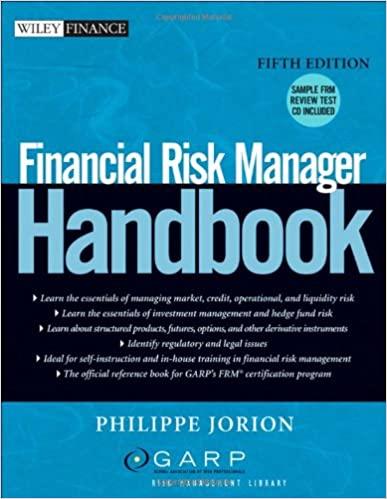Explain the importance of figure 5.12 on page 159. In particular, what does the inset suggest to the risk-averse investor? Explain why lognormal mathematics is used with security returns, especially with, but not limited to, exercises that may involve continuously compounding. Lastly: discuss this statement: The probability of a shortfall is an incomplete measure of investment risk. (Hint: is it complete, or is it missing an element?)
Below is an image of the figure along with information from the textbook page

CHAPTER 5 Risk, Return, and the Historical Record 159 What about risk for investors with other long-term horizons? Figure 5.11 compares 25-year to 10-year invest- ments in large and small stocks. For an appropriate comparison we must supplement the 10-year investment with a 15-year investment in Tbills To accomplish this comparison, we bootstraD 15-year samples from the history of T-bill rates and augment each sample with 10 annual rates drawn fromthe history of the risky investment. Panels Al and A2 in Figure 5.11 show the comparison for large stocks. The frequency distribu- tions reveal a substantial difference in the risks of the terminal portfolio. This difference is clearly manifested in the portfolio performance statistics. The same picture arises in panels B1 and B2 for small stocks. Notice that even a 10-year investment in small stocks could lead to a terminal loss of 94%. 20 Worst-Average -Median T-Bills 5% 10 5 20 25 20 25 Years Figure 5.12 Wealth indexes of selected outcom es of large stock portfolios and the average T-bill portfolio. Inset: Foaus on worst 116, and 5% outcomes versus bills Figure 5.12 shows trajectories of wealth indexes for some of the Dos- sible outcomes of a 25-year invest- ment in large stocks, compared with the wealth index of the average outcome of a T-bill portfolio. The outcomes of the stock portfolio in Figure 5.12 range from the worst, through the bottom 1% and 5% of terminal value, and up to the mean and median terminal values The bottom 5% still results in a significant shortfall relative to the T-bill portfolio. In sum the analysis clearly rejects the notion that stocks become less risky in the long run. Yet many practitioners hold on to the view that investment risk is less pertinent to long- term investors. A typical demonstration shown in the nearby box relies on the fact that the standard deviation (or range of likely outcomes) of annualized returns is lower for longer term horizons. But the demonstration is silent on the range of total returns CHAPTER 5 Risk, Return, and the Historical Record 159 What about risk for investors with other long-term horizons? Figure 5.11 compares 25-year to 10-year invest- ments in large and small stocks. For an appropriate comparison we must supplement the 10-year investment with a 15-year investment in Tbills To accomplish this comparison, we bootstraD 15-year samples from the history of T-bill rates and augment each sample with 10 annual rates drawn fromthe history of the risky investment. Panels Al and A2 in Figure 5.11 show the comparison for large stocks. The frequency distribu- tions reveal a substantial difference in the risks of the terminal portfolio. This difference is clearly manifested in the portfolio performance statistics. The same picture arises in panels B1 and B2 for small stocks. Notice that even a 10-year investment in small stocks could lead to a terminal loss of 94%. 20 Worst-Average -Median T-Bills 5% 10 5 20 25 20 25 Years Figure 5.12 Wealth indexes of selected outcom es of large stock portfolios and the average T-bill portfolio. Inset: Foaus on worst 116, and 5% outcomes versus bills Figure 5.12 shows trajectories of wealth indexes for some of the Dos- sible outcomes of a 25-year invest- ment in large stocks, compared with the wealth index of the average outcome of a T-bill portfolio. The outcomes of the stock portfolio in Figure 5.12 range from the worst, through the bottom 1% and 5% of terminal value, and up to the mean and median terminal values The bottom 5% still results in a significant shortfall relative to the T-bill portfolio. In sum the analysis clearly rejects the notion that stocks become less risky in the long run. Yet many practitioners hold on to the view that investment risk is less pertinent to long- term investors. A typical demonstration shown in the nearby box relies on the fact that the standard deviation (or range of likely outcomes) of annualized returns is lower for longer term horizons. But the demonstration is silent on the range of total returns







